Vishnu Bhagwan, also famously known as Lord Narayana, is one of the most revered Bhagavan in Hinduism, regarded as the supreme protector and the preserver of the universe. Lord Vishnu maintains Dharma and protects adharma.
- The Hindu Trinity: Vishnu’s Role as the Preserver
- The four arms of Lord Vishnu
- Lord Vishnu’s Divine Consort: Goddess Lakshmi
- Vishnu Bhagwan’s Teachings: Living by Dharma
- Challenges while following Dharma
- Following Dharma in the Modern World
- The Incarnations of Vishnu
- How to Worship Lord Vishnu
- How to meditate on Vishnu?
- Special Days to Worship Vishnu
- Lord Vishnu in Hindu Scriptures
- Lord Vishnu’s Abode: Vaikuntha
- The Rewards of Worshiping Vishnu
The Hindu Trinity: Vishnu’s Role as the Preserver
If you are a Sanatani, you may know that Sanatana Dharma consists of a divine Trimurti (also known as the Hindu Trinity).
The Trimurti comprises Lord Brahma (the Creator), Lord Vishnu (the Preserver), and Lord Shiva (the Destroyer). While Lord Brahma creates the universe and Lord Shiva dissolves it, Lord Vishnu preserves and maintains balance and cosmic order. Whenever chaos and injustice arise, Lord Vishnu incarnates to restore Dharma to maintain the cosmic balance and prevail Dharma.
The four arms of Lord Vishnu
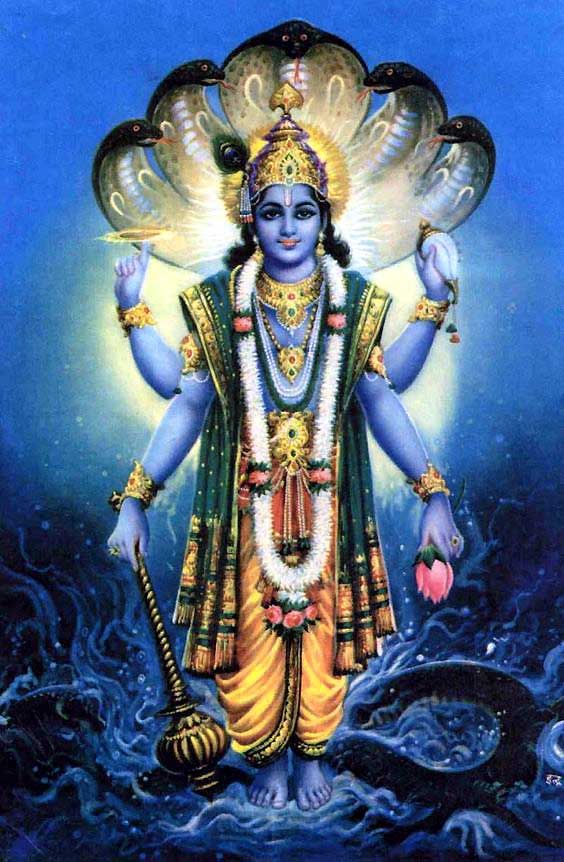
Vishnu Bhagwan has four arms, and he carries different symbolic items on them. The symbolic items have a deep spiritual significance representing his divine supreme powers:
- Shankha (conch): As mentioned in ‘What is the Symbol of Hinduism‘, Om is the frequency of creation. Sankha represents the primordial sound ‘Om’, reminding devotees of Vishnu Ji’s divine eternal presence.
- Sudarshana Chakra (Disc): symbolizes time, dharma, and Vishnu Bhagwan’s power for the destruction of evil.
- Gada (Mace): signifies physical and spiritual strength and protection for devotees.
- Padma (Lotus): Represent purity, detachment, and spiritual awakening.
- The Lotus grows in muddy waters yet remains pure and unblemished, symbolizing:
- Purity: Leading a life of dharma while staying unaffected by negativity.
- Detachment: The Lotus remains unattached to the water it grows in, teaching us to remain detached from worldly desires.
- Spiritual Awakening: The blooming of the Lotus represents the unfolding of spiritual wisdom and realization of the divine within oneself.
- Vishnu’s Role: For someone not seeking moksha, the Lotus still guides you toward self-mastery and clarity in navigating material and spiritual life harmoniously.
Lord Vishnu’s Divine Consort: Goddess Lakshmi
Vishnu Bhagwan’s inseparable divine consort is the Goddess Lakshmi, the goddess of wealth, fortune, and prosperity. Laxmi Ji resides at his feet and blesses devotees with abundance when Vishnu is pleased. Lord Vishnu’s and Lakshmi Mata’s union symbolizes cosmic harmony—where Vishnu’s protection ensures that prosperity thrives.
Vishnu Bhagwan’s Teachings: Living by Dharma
Important Note: Sanskrit words are so rich that they can’t be translated into one-word English translation. I have mentioned this in the ‘What is Hinduism‘ blog as well. I would be completely wrong if I said Dharma is righteousness. And that is used for a lack of better words to make one understand at the surficial level.
The word Dharma has its root in Sanskrit “dhr”, again in English if I have to translate it, the best is “to uphold, sustain or support”. Hence, we can say Dharma signifies that which sustains the order of the universe—socially, morally, ethically, and spiritually. But there is much more beyond that as well, which we will be covering in a separate blog.
Dharma has multiple dimensions, here let’s cover:
Sāmānya Dharma (Universal Dharma)
The Samanya Dharma, applies to all beings, regardless of caste, gender, or stage of life. Its key principles include:
- Ahimsa (Non-violence): Avoiding harm to any being physically, mentally, or emotionally.
- Satya (Truth): Speaking and acting with honesty and integrity.
- Dāna (Generosity): Sharing resources and helping those in need.
- Shama (Forgiveness): Letting go of grudges and practicing tolerance.
- Dayā (Compassion): Being kind to all living beings.
- Tapas (Self-discipline): Practicing self-control and focusing on self-improvement.
In order to live by Dharma, one must follow the Samanya Dharma while also being mindful of the Dharma framework mentioned below.
The Dharma Framework
I am not sure, if there is something like the Dharma Framework in exact terms, but the concepts that I have broken down into are rooted in our sacred scriptures. This framework is very useful for the modern-day understanding of Dharma.
Your Duty to Yourself (Self-Care)
When you come to think of it, our Sanatana Dharma is so rich. Dharma also recognizes that you cannot effectively fulfill your other duties if you are not taking care of yourself. Mentally, physically, and Spiritually. Hence, this includes:
- Maintaining a healthy diet.
- Getting enough rest.
- Practicing mindfulness or meditation.
- Engaging in activities that bring you joy.
Your Duty to Society
Social Dharma refers to your responsibilities to your family, to the community, and the society as a whole. The acts that we engage in a way benefit the common good, such as participating in cleaning programs, and volunteering also fall into this category. And many more such as:
- Being honest and ethical in your interactions.
- Helping those in need.
- Respecting and being kind to others.
Your Duty to the Nature (Divine Order)
This Dharma involves recognizing that we are connected to the larger universe and we must act in a way that respects our environment, living in harmony with nature. This might be a little complex to understand, but let me break it further, it means:
- Living sustainably. This also includes thinking of the future generation and resources for them.
- Respecting all living beings. Not just human beings, but also animals.
- Acknowledging the interconnectedness of all things.
Challenges while following Dharma
Now definitely, a lot of question arises when trying to follow Dharma. However, Dharma doesn’t have a rigid rules to follow. And it even changes with time, place, and context. For instance, let’s take the example of Arjuna in the Kurukshetra war. Arjuna was hesitant to battle his loved ones, however, with Lord Krishna’s knowledge and his realization, he understood that it was not violence but rather a fight of righteousness battle. Hence, Dharma is contextual as well.
Sometimes, duties conflict as well. You should be truthful but what if you are confused if the truth will be hurting a person who is already in deep pain more than the compassion that they need at the moment? In such cases, Vishnu Bhagwan guides us to:
- Prioritize the greater good.
- Follow your conscience and seek guidance from scriptures, gurus, or your Ishta Devata.
Following Dharma in the Modern World
Now to make it easier for you, below I have broken down following Dharma in the modern world in practical steps:
Know Your Svadharma
Svadharma, known as Personal Duty, means reflecting on one’s strengths, responsibilities, and role in life. To find your Svadharma, you can ask the following questions:
- What are my natural skills?
- How can I contribute to society?
- How can I balance my personal and social duties?
Align Your Actions with Dharma
Before executing any form of action, you can ask yourself these questions to make sure you are following Dharma and aligning your actions with it.
- Does this action benefit or harm others?
- Does it align with truth and righteousness?
- Am I acting out of duty?
Follow the Principles of Nishkama Karma
Nishkama Karma teaches us to perform our duties sincerely without attachment to outcomes. We can perform Karma, surrendering the results to our Ishta Devata.
Balance Material and Spiritual Life
Dharma doesn’t ask us to abandon Artha (pursuit of wealth) and kama (pleasures in life), but rather Dharma teaches that we should pursue wealth and pleasures within ethical bounds.
We should not neglect our spiritual growth and also dedicate a portion of our time to our spiritual growth while we are pursuing Kama and Artha.
Family Life
Dharma teaches us that we should be caring for our family with love and fairness. We should be providing knowledge, the right path, emotional support, and ethical guidance.
The Incarnations of Vishnu
Whenever evil threatens to overpower good, whenever Dharma is at risk, whenever adharma is rising at the peak, the Supreme protector Vishnu Bhagwan incarnates to re-establish Dharma.
He has descended in different forms throughout the different Yugas whenever he needed to uphold Dharma. The ten incarnations (Dashavatara) of the Supreme protector Vishnu Bhagwan to prevail Dharma are:
- Matsya (Fish): Saved the first man and sacred scriptures during a great flood.
- Kurma (Tortoise): Supported the cosmic churning of the ocean, famously known as the Samudra Manthan.
- Varaha (Boar): Rescued the Earth from a demon.
- Narasimha (Man-Lion): Killed the tyrant Hiranyakashipu.
- Vamana (Dwarf): Subdued the demon king Bali.
- Parashurama: Defeated corrupt rulers to restore order.
- Rama: The hero of Ramayana, embodying virtue and righteousness.
- Krishna: Delivered the Bhagavad Gita and guided humanity.
- Buddha: Enlightened the world with wisdom and non-violence.
- Kalki (Yet to Come): Will appear at the end of Kali Yuga to destroy evil.
Lord Rama and Lord Krishna are the most widely known incarnation of Vishnu Bhagwan. Lord Kalki is yet to incarnate and will appear at the end of Kali Yuga. We will be discussing every reincarnation in depth in a separate blog in the near future.
How to Worship Lord Vishnu
Devotees worship Vishnu Bhagwan through various ways such as meditations, prayers, offerings, rituals, going on pilgrimages, and much more. Daily practices include:
- Chanting Vishnu Mantras:
- “Om Namo Narayanaya” – A universal prayer for divine grace.
- “Om Vishnave Namah” – A mantra invoking Vishnu’s blessings.
- “Om Namo Bhagavate Vasudevaya” – A chant of surrender and devotion.
- Reciting Vishnu Sahasranama (1000 Names of Vishnu), Vishnu Gayatri Mantra.
- Offering Tulsi leaves, flowers, and fruits (especially Yellow color as it’s dear to Lord Vishnu), Sandalwood paste on the altar to Vishnu Bhagwan.
- Observing Ekadashi fasting in his honor.
- Blowing Sankha (conch) during morning/evening prayers.
- Reading Vishnu’s books such as the Bhagavad Gita and Vishnu Purana for wisdom.
Devotees also visit sacred Vishnu temples on Pilgremages such as the Char Dham (Badrinath, Dwarka, Puri, Rameshwaram) to seek Vishnu’s blessings and immerse themselves in the energy of sacred spaces.
How to meditate on Vishnu?
There are various ways to meditate on Lord Vishnu, here I will mention two ways:
Visualizing Lord Vishnu
Visualize Vishnu Bhagwan reclining on Shesha Naga (the divine serpent) with the ocean of milk around him. Meditate on his serene face and the lotus emerging from his navel.
Mantra Chanting Meditation
- Sit in a quiet space facing east or north direction.
- Close your eyes and chant any Vishnu Bhagwan mantra that you connect with such as “Om Namo Narayanaya”. While doing this, visualize Lord Narayana’s form.
- Imagine the Vishnu Bhagwan’s form, holding the conch (Shankha), discus (Chakra), mace (Gada), and lotus (Padma).
- Allow your mind to dwell on his infinite compassion, visualizing him as the sustainer of the universe.
Special Days to Worship Vishnu
Certain days are particularly sacred for Lord’s Vishnu devotees, they are:
- Ekadashi: The 11th day of each lunar fortnight, observed through fasting and prayer.
- Vaikuntha Ekadashi: A special Ekadashi believed to open the doors to Vishnu’s divine abode.
- Janmashtami: Celebrated as the birth of Lord Krishna, one of Vishnu Bhagwan’s avatars.
- Rama Navami: Celebrated the birth of Lord Rama. one of Vishnu Bhagwan’s avatars.
Lord Vishnu in Hindu Scriptures
Vishnu Bhagwan’s greatness is extolled in various Hindu sacred scriptures such as:
- Vishnu Purana: Vishnu Purana consists of the chronicles of Narayana’s glories and cosmic duties.
- Bhagavad Gita: The most widely known book of Hinduism belongs to Vishnu Bhagwan as well. As Lord Krishna, Vishnu Bhagwan imparts spiritual wisdom on duty, devotion, yogas imprinting Dharma.
- Srimad Bhagavatam: Describes his incarnations and divine acts.
- Ramayana and Mahabharata: Epic tales where Vishnu incarnates as Rama and Krishna to guide humanity.
Lord Vishnu’s Abode: Vaikuntha
You must have heard Vaikuntha Loka. Vishnu Bhagwan resides in Vaikuntha. Vaikuntha is a blissful spiritual realm that is beyond time and suffering. It is passed down that living by sincere devotion following Dharma grants one a place in Vaikuntha after death, where the soul attains eternal peace.
The Rewards of Worshiping Vishnu
Before I continue here, I must be writing that one shouldn’t be following Dharma expecting material rewards from Bhagawan Vishnu (Dharma is not a transactional thing), but rather following Dharma is about aligning oneself with the divine order of Vishnu Ji, the preserver, the supreme sustainer of the universe.
That being said, Bhagavan Vishnu does take care of and uplift his devotees, ensuring devotees’ ultimate well-being, materially and spiritually, which is clearly shown in Bhagavad Gita in multiple Slokas.
Bhavagad Gita, Chapter 18, Sloka 46:
यतः प्रवृत्तिर्भूतानां येन सर्वमिदं ततम्। | Yataḥ pravṛittir bhūtānāṁ yena sarvam idaṁ tatam,
स्वकर्मणा तमभ्यर्च्य सिद्धिं विन्दति मानवः।। | Svakarmaṇā tam abhyarcya siddhiṁ vindati mānavaḥ.
From whom all beings originate and by whom all this is pervaded, by worshipping Him through one’s own duty (Svadharma), a person attains Samsiddhi (perfection?).
Lord Vishnu, as Lord Krishna, directly assures that those who sincerely follow Dharma and devote themselves to him will never be abandoned. Even if one struggles or falters, Bhagavan Vishnu will support them.
When the supreme protector, Bhagavan Vishnu, is pleased, he blesses his devotees with:
- Protection from evil and misfortune.
- Wealth and prosperity through Lakshmi’s grace.
- Spiritual knowledge and liberation (Moksha).
- Harmony in life through righteous living.
Additionally, Dharmic actions generate Punya and we receive the divine grace from the supreme protector himself.
Well, that is it for this blog and we have come to the end of it. Now, you know very well that Vishnu Bhagwan is the divine protector who ensures the universe runs in harmony following Dharma. Additionally, Vaishavism is the most followed tradition in Sanatana Dharma.
Vishnu Bhagwan’s teachings, and incarnations inspire millions to live a life of righteousness and devotion. By worshiping Vishnu and embodying his values, one can attain spiritual enlightenment, peace, and ultimately, liberation.
May Vishnu Bhagwan bless us all with these divine blessings. Om Namo Narayanaya.
If you found this blog insightful, dive deeper into Hinduism’s timeless wisdom by exploring more articles on our website!
Read Next:
Agami Karma: How Your Thoughts Today Shape Your Destiny Tomorrow
What even is karma? Most people would describe karma as “what goes around, comes around.”…
30 Powerful “Bhagavad Gita As It Is” Quotes That Will Transform Your Life
The Bhagavad Gita, the “Song of God,” the one of the most popular holy books…
7 Core Beliefs of Hinduism
Hinduism, the world’s oldest and the most diverse living religion doesn’t revolve around a single…
Karma in Hinduism: The Hidden Law of Your Life
Vishakha Nakshatra: The balance of material success & spiritual wisdom
In Sanskrit, Vishakha means “the two-branched”. Vishakha Nakshatra literally spans two different zodiac signs: Libra…
Who is Bhagvan Krishna?
Bhagvan Krishna, the eighth avatar of Lord Vishnu, the supreme cosmic preserver, is one of…


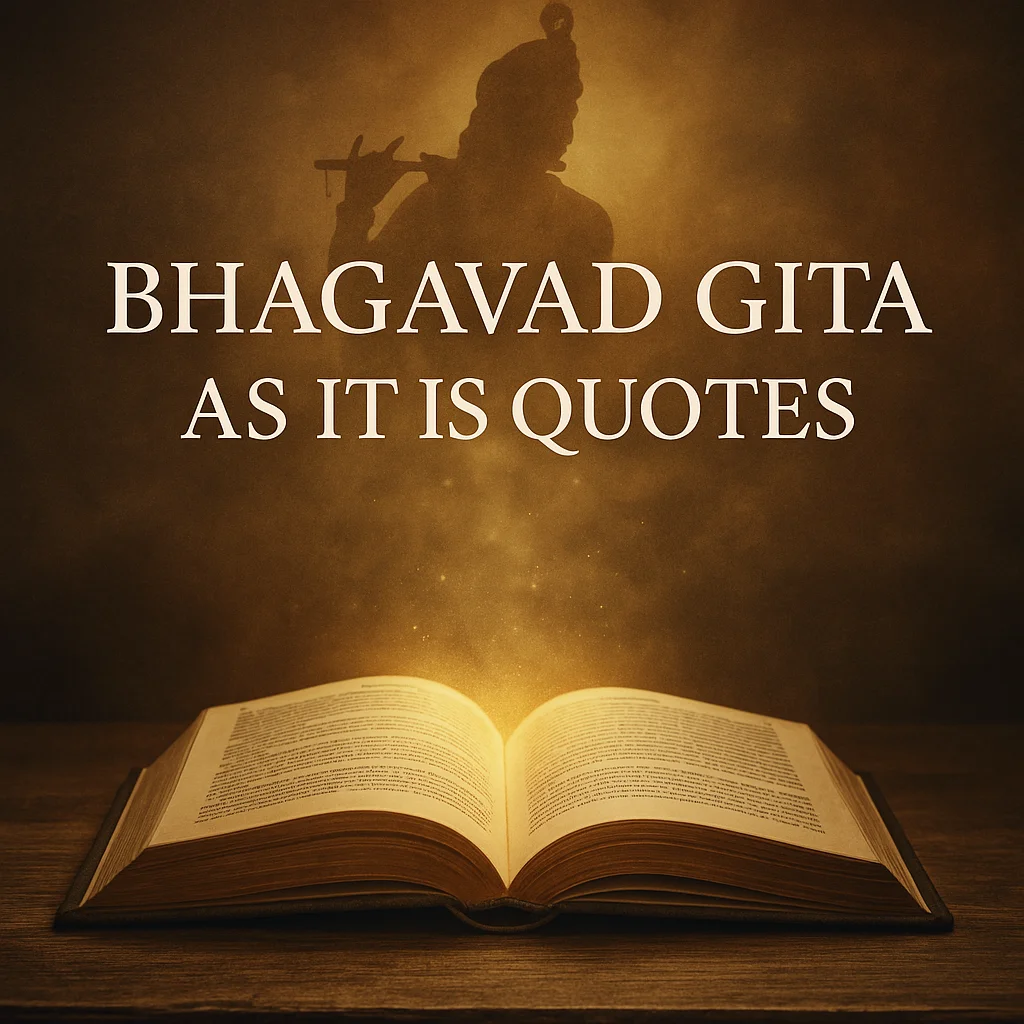

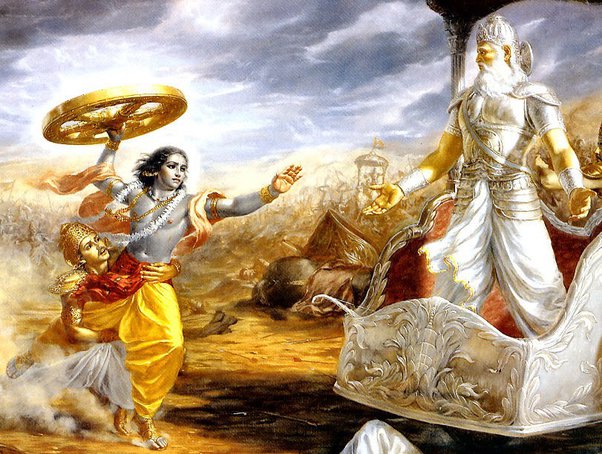
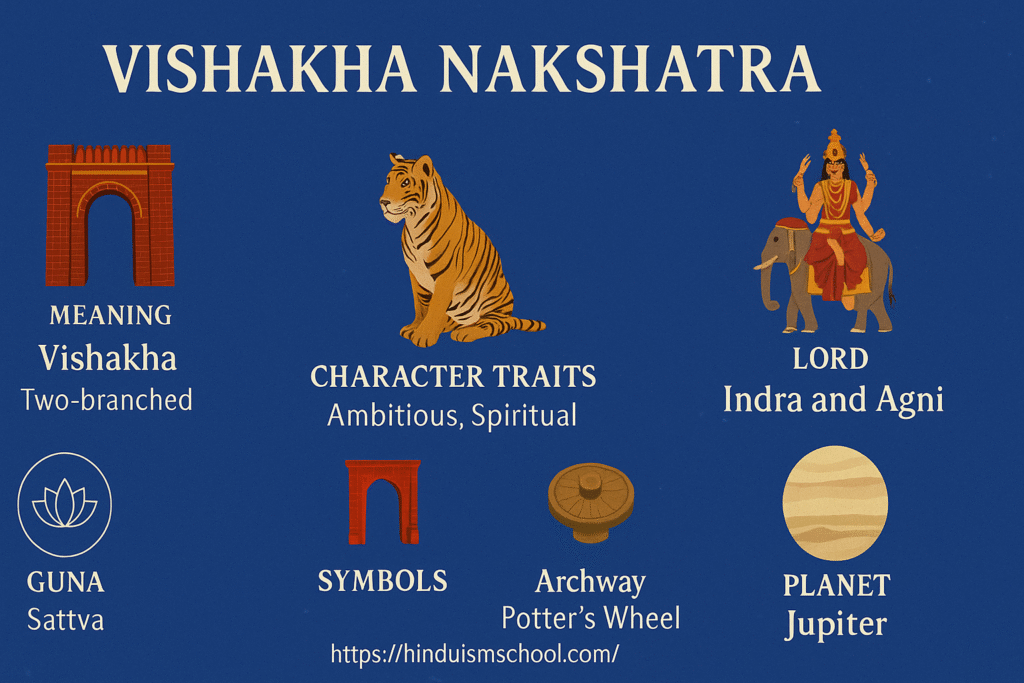
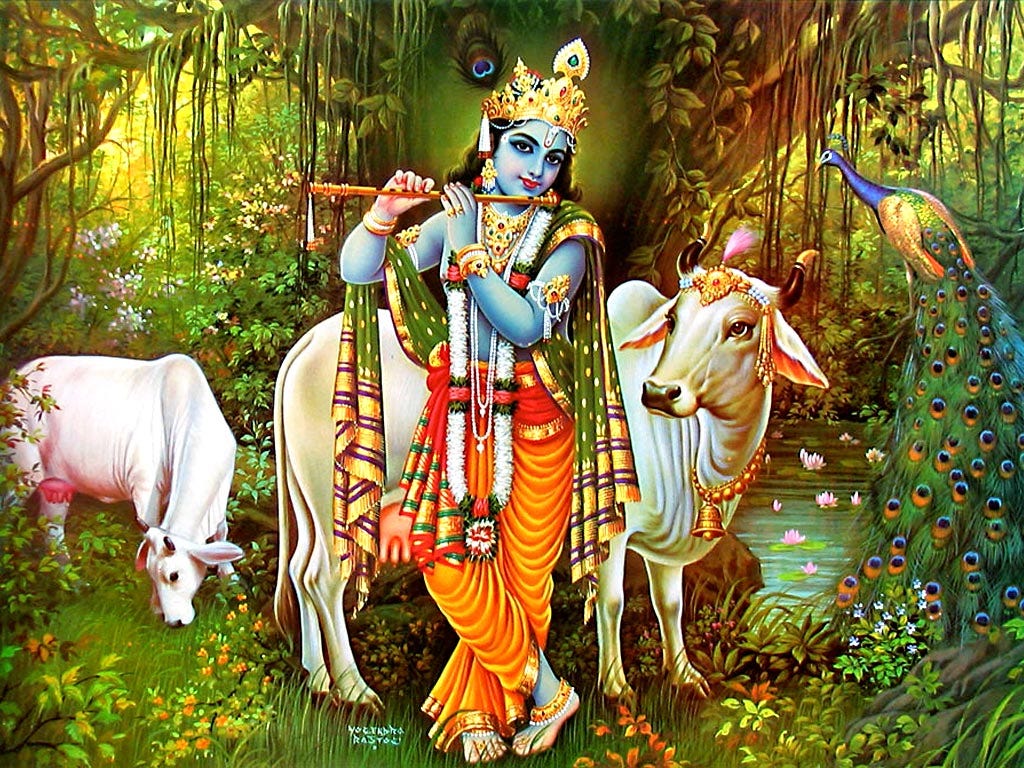
Leave a Reply